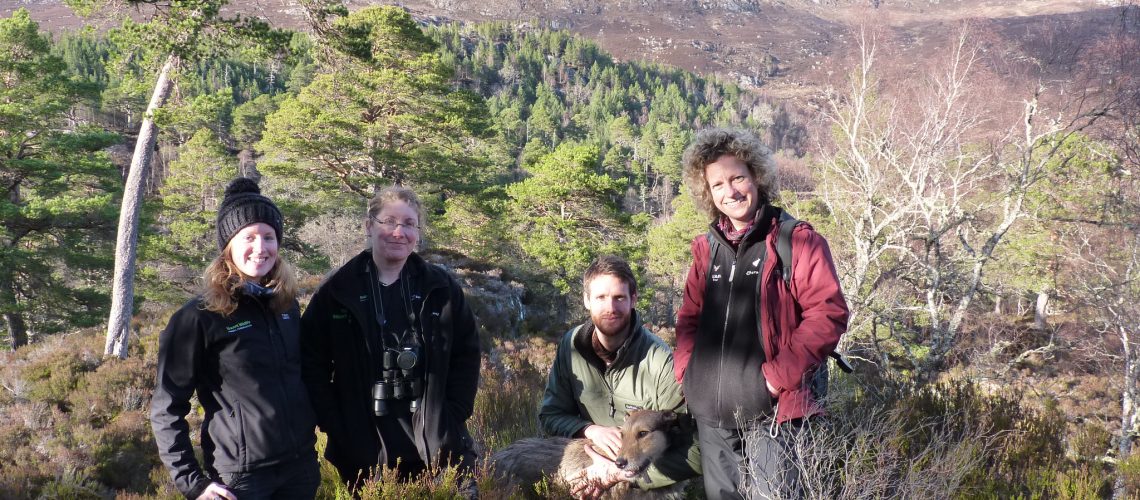
Most of our blogs have focused on our work in Wales as we prepare the ground at the release sites for our pine marten reinforcement. This month’s blog focuses on the other end of our work, in Scotland.
In early March, we headed north to the Scottish Highlands armed with maps, sample bags and waterproofs, and accompanied by fellow pine marten-enthusiasts and long-standing volunteers, John and Shirley.
The purpose of our trip was to carry out assessments at sites where we may capture pine martens for translocation to Wales. To do this, we surveyed for and collected scats (droppings) in order to identify sites which have high pine marten activity. Scat surveying is an age-old method for studying pine martens, as well as many other carnivores. Martens routinely leave their scats on forest tracks to mark their territories and communicate with each other, as well as other species, which makes it fairly simple for us to find them. Marten scats were traditionally identified based on size, morphology and smell (which has been described as akin to palma violets or sweet hay, depending on who you ask!), to distinguish them from fox scats. However, recent advancements in genetic techniques have meant that pine marten DNA can now be extracted from scats, as well as other material such as hair. We now routinely send all of the scats we collect for DNA analysis to identify the culprit, as marten scats can overlap in size and morphology with scats from foxes and other mustelids such as polecats. Geneticists at Waterford Institute of Technology have developed techniques to identify the gender and even the individual animal that left the scat (or other sample), which can provide information on the number of animals present at the site.
Despite initial concerns that doing fieldwork in the Highlands during March may result in us searching for scats under several inches of snow, that was not the case, and we were content with the unpredictable Highland weather which gave us sun, rain, hail, snow and wind often all within one day! High winds experienced during the fieldwork brought down many trees, which made driving and walking around the forests interesting and involved moving many wind-blown trees off tracks or stepping around, over or even squeezing under them!
We chose to carry out our surveys in March as this is the time of year when the pine marten population is at its annual low prior to breeding taking place during late March and April.
Accordingly, the lowest number of scats are found during the winter months. Previous work has shown that the densities of pine marten scats on forest tracks show seasonal variations of 100-fold! A crucial aspect of any translocation is that the removal of animals for translocation should not affect the viability of the source population. Therefore, surveying during the winter period allows us to gather information on the population at its annual low which will provide us with very conservative estimates on the number of pine martens we can take from these sites without negatively affecting that population.
Although marten scats are at their least numerous at this time of year, we certainly found plenty! On one memorable transect, a whopping 72 marten scats were found within 1.5km! This certainly exceeded our expectations and we ran out of sample bags by the third day and had to quickly purchase some more! By identifying areas with high marten activity, we can identify potential trap sites where we should have the highest chance of catching martens in the autumn.
From speaking to local people, pine martens appear to be a welcome visitor in many gardens in the Highlands, and are a significant tourist attraction. We hope that this situation will be replicated in Wales in years to come. Whilst we weren’t lucky enough to catch a glimpse of any martens, we did have some wonderful sightings of some ‘northern specialities’, including red deer and golden eagles, and had some excellent views of red kites which have been reintroduced to the area.
We will now spend the next few months planning the logistics of the trapping and translocation in fine detail, with input from a variety of stakeholders, and of course, continuing work at the release sites in Wales.
Lizzie Croose, Mustelid Conservation Officer